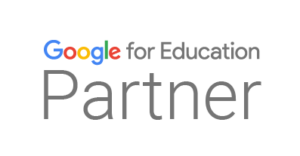Teachers have always shaped young minds. Today they also guard something invisible yet vital i.e., student data. From grades and attendance to personal details, every piece of information stored online is valuable. Cyber threats are rising, and schools are not immune. At the same time, students need guidance on how to behave in digital spaces and learn the foundation of digital etiquette.
This dual responsibility puts teachers at the heart of data protection and digital etiquette. For school leaders the question is no longer whether teachers need training but how fast it must happen.
Why Teacher Awareness Matters
It is easy to think cybersecurity belongs only to IT administrators. In reality, teachers handle sensitive information every day. They log in to systems, upload assignments, and communicate online. A single weak password or a careless click can expose an entire school to risk.
With awareness, the same teacher becomes a shield. They know how to spot suspicious activity, and they stop problems before they spread. Their actions set an example for students to follow.
Teachers as Digital Role Models
Students observe and imitate. If a teacher uses secure logins, respects privacy, and communicates responsibly online, students will do the same. Digital etiquette now means more than polite words. It includes –
- Respectful and inclusive language in online spaces.
- Awareness of digital footprints.
- Caution before sharing personal details.
Teachers who model these habits protect data and nurture responsible digital citizens.
Privacy in Teacher Training
Training is the key to stronger protection. It gives teachers the confidence to manage data with care. Practical modules can cover –
- How to spot phishing attempts?
- How to handle digital submissions securely?
- Why strong passwords and authentication matter?
- What can and cannot be shared with others?
- Which platforms are safe to use?
- How to maintain confidentiality during online classes?
These are not technical lessons. They are practical habits that fit easily into daily routines.
The Ripple Effect on Students and Parents
When teachers practice safe digital behavior, students learn to do the same. They browse responsibly, think before they post, and protect their information. Parents also notice. They feel reassured when schools show care for data privacy. This trust strengthens relationships and enhances the school’s reputation.
Leadership and Policy Support
Teachers cannot succeed alone. School leaders must create a framework that makes privacy a shared goal. This includes –
- Clear policies on how devices and data are used.
- Compliance with regulations.
- Regular reviews of privacy practices.
- Secure systems that support teachers in their work.
When leaders provide this support, teachers feel empowered rather than burdened. The whole school benefits.
Hybrid Learning and New Risks
Online and hybrid classrooms bring flexibility but also new risks. Teachers now record lessons, share files, and use screen sharing tools. Without care, private information may leak.
Training helps teachers manage these risks. They learn to seek consent before recording, keep sensitive files closed during lessons and use only secure platforms. As a result, schools can embrace hybrid learning without compromising privacy.
Creating a Culture of Responsibility
Privacy and etiquette should be part of the school’s culture. Not a one time workshop, but a mindset. Teachers play a central role in building this.
When they emphasize safety and respect every day, these values become second nature. Students grow up prepared for a digital world where their choices have lasting effects.
The Teacher as Guardian of Trust
Technology can block many threats, but people remain the strongest line of defense. Teachers are the ones who interact with data daily. With awareness and training, they can protect information and guide students toward safe and respectful digital behavior.
For schools, supporting teachers in this role is an act of trust. It protects students, reassures parents, and strengthens the institution. Most of all, it ensures learning continues in a safe and respectful environment.
The question is clear. Are we giving teachers the tools they need to protect what matters most?




 1st Floor, H-31, Sector 63,
1st Floor, H-31, Sector 63,